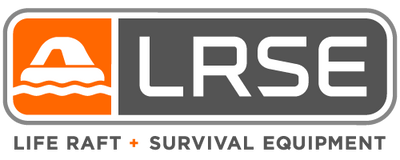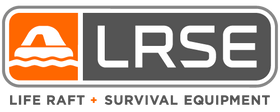Commercial Fishing Safety Checklist: What You Need Before Heading Out

Safety should always be your top priority when getting ready for a fishing trip. Whether you're heading offshore or staying closer to the coast, the right gear can make a big difference in an emergency. To help you prep your boat and crew, we’ve created a quick checklist. If you're unsure what equipment your vessel needs based on its type and operating area, the USCG Checklist Generator is a great place to start. After you’ve gathered the required safety gear, reach out to a Dockside Examiner in your area. Click here to find one nearest you.
Life Rafts
Make sure you have a properly sized life raft based on your crew, vessel, and location. It needs to be approved by the Coast Guard and should be inspected annually after the first year. Always check the service sticker or expiration date so you know it’s good to go.
EPIRBs (Emergency Beacons)
An EPIRB is a must-have. If your vessel is 36 feet or longer, you’re required to carry a Category I EPIRB, which activates automatically if submerged. Smaller vessels can use a Category II, which is activated manually. Be sure the battery and hydrostatic release are up to date, and register your beacon with NOAA so your rescue info is accurate.
Visual Distress Signals (Flares)
The type of flares you need depends on how far from shore you're operating.
-
For trips up to 50 miles, a standard commercial flare kit is enough.
-
Beyond that, you’ll need a higher-grade kit with longer-range visibility.
In coastal waters, three handheld flares are usually sufficient. Always check the expiration dates, since flares have a limited shelf life.
Life Jackets and Immersion Suits
Cold water fishing? Everyone on board should have a working immersion suit. In other areas, Coast Guard-approved Type I life jackets are the standard. Check for damage, make sure zippers work smoothly, and store suits properly for quick access. Add a light and whistle to each one and label them with names or your vessel’s name for easy identification.
Life Ring and Recovery Gear
Every vessel needs a bright orange life ring with reflective tape and at least 60 feet of floating line. To improve crew safety, consider adding a recovery sling or boarding ladder for quick rescues in man-overboard situations.
Don’t Forget These Essentials
-
Clearly posted safety and pollution notices
-
Working air horn or whistle
-
First-aid supplies in good condition
-
Fire extinguishers that are not expired or damaged
Having this gear ready and in working condition helps keep your crew safe and your vessel compliant with regulations. If you’re unsure about what’s required for your boat, give us a call at (401) 816-5400 or reach out through our contact page.
Need a printable checklist? Grab it here for free.












